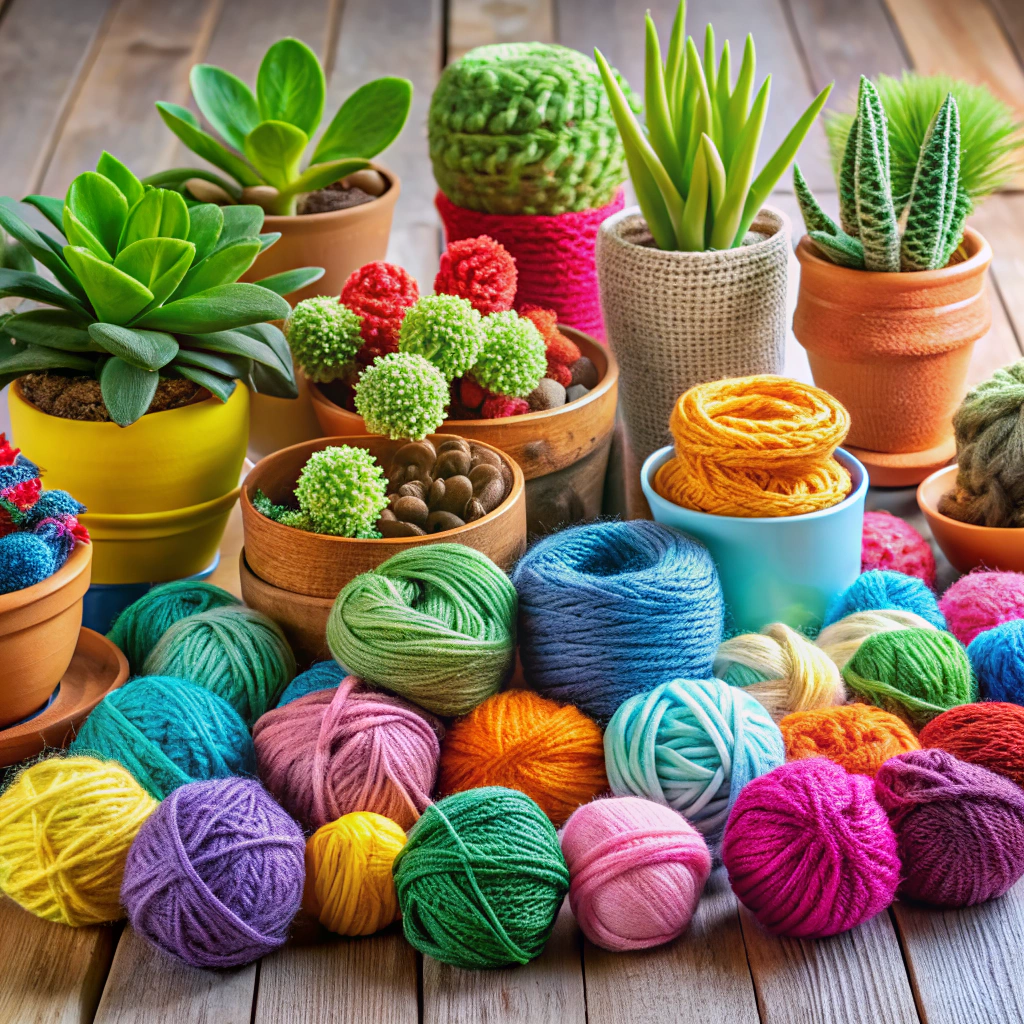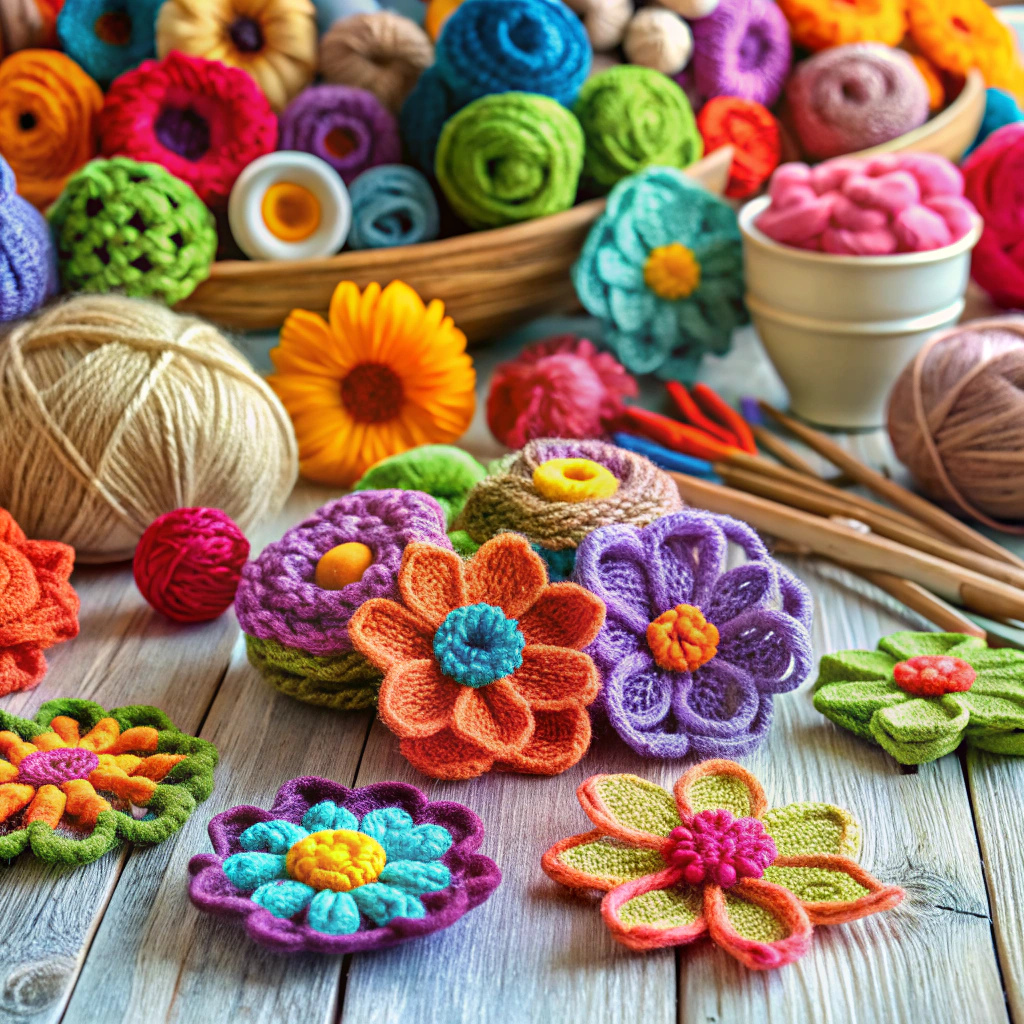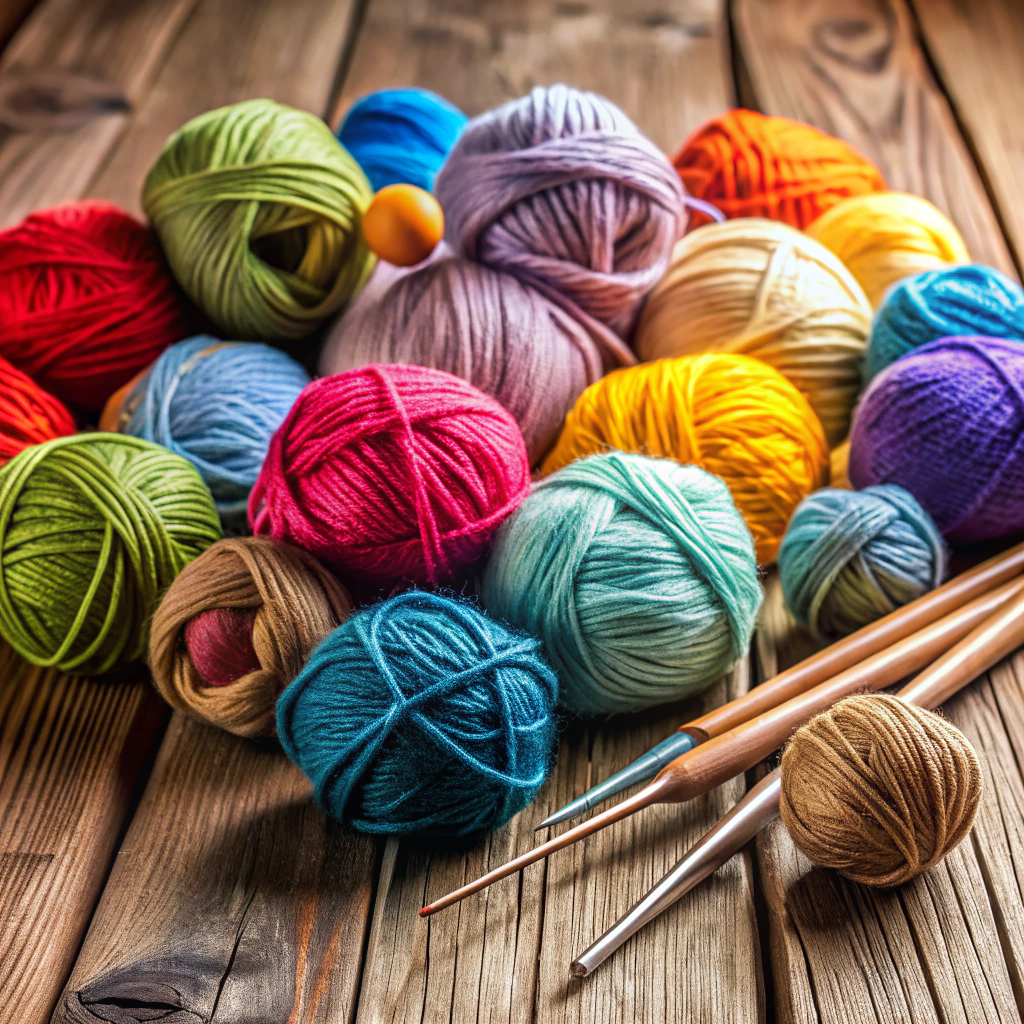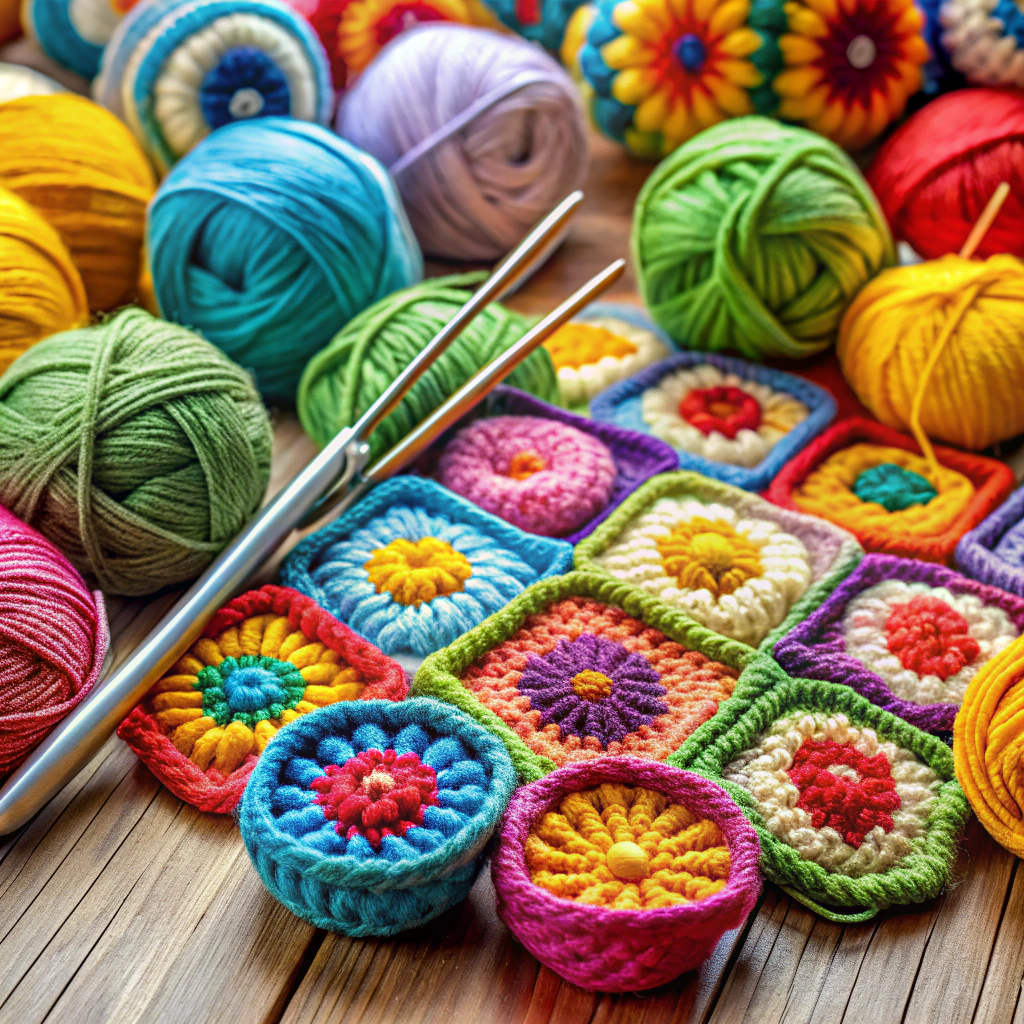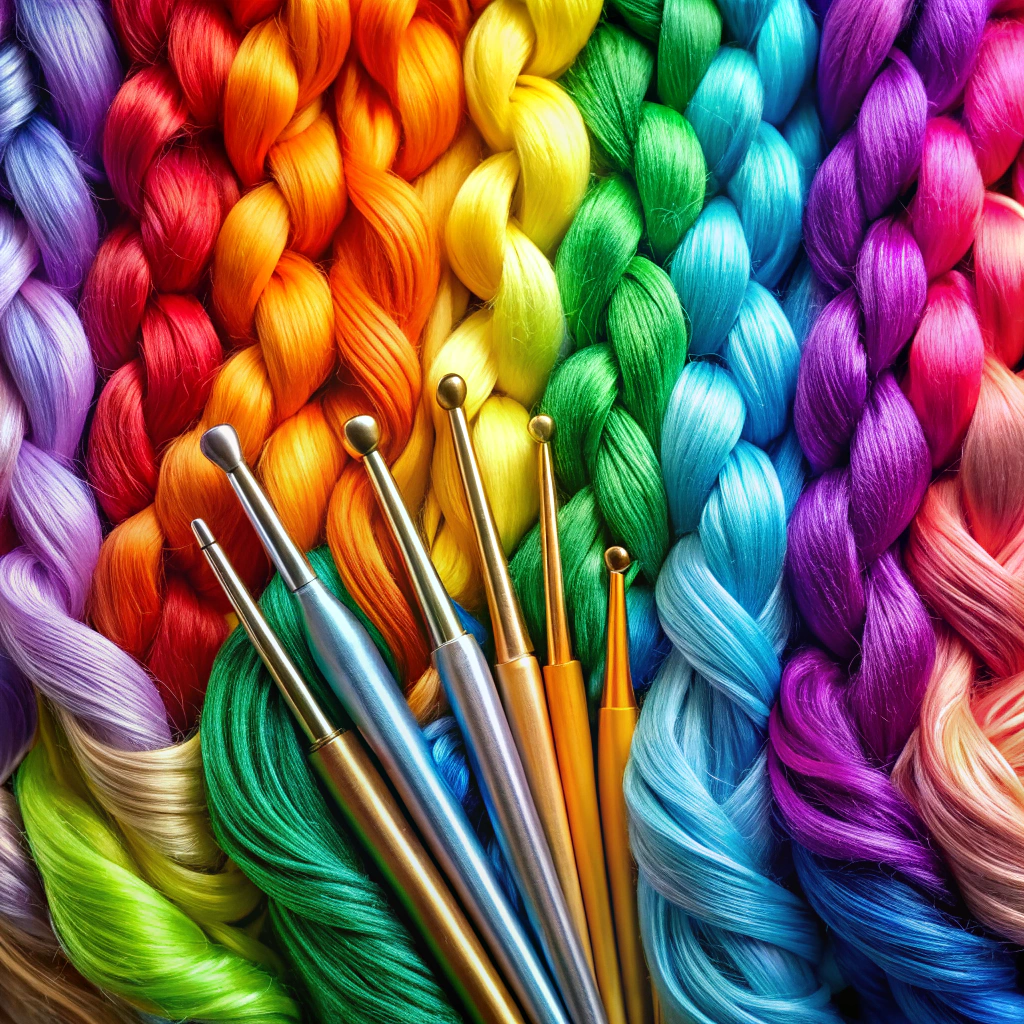Discover the fascinating world of crochet as we unravel various types of crochet work, perfect for beginners and experienced crafters alike in this engaging blog post.
Crochet work is a beautiful and versatile craft that has been enjoyed by people for centuries. From intricate doilies to cozy blankets, there are so many different types of crochet work that can be created.
Whether you’re a beginner or an experienced crocheter, there’s always something new to learn and explore in this wonderful world of yarn crafts. In this blog post, we’ll take a closer look at some of the most popular types of crochet work, their unique characteristics, and what makes them so special.
So grab your hook and yarn, and let’s dive into the world of crochet!
Mosaic Crochet
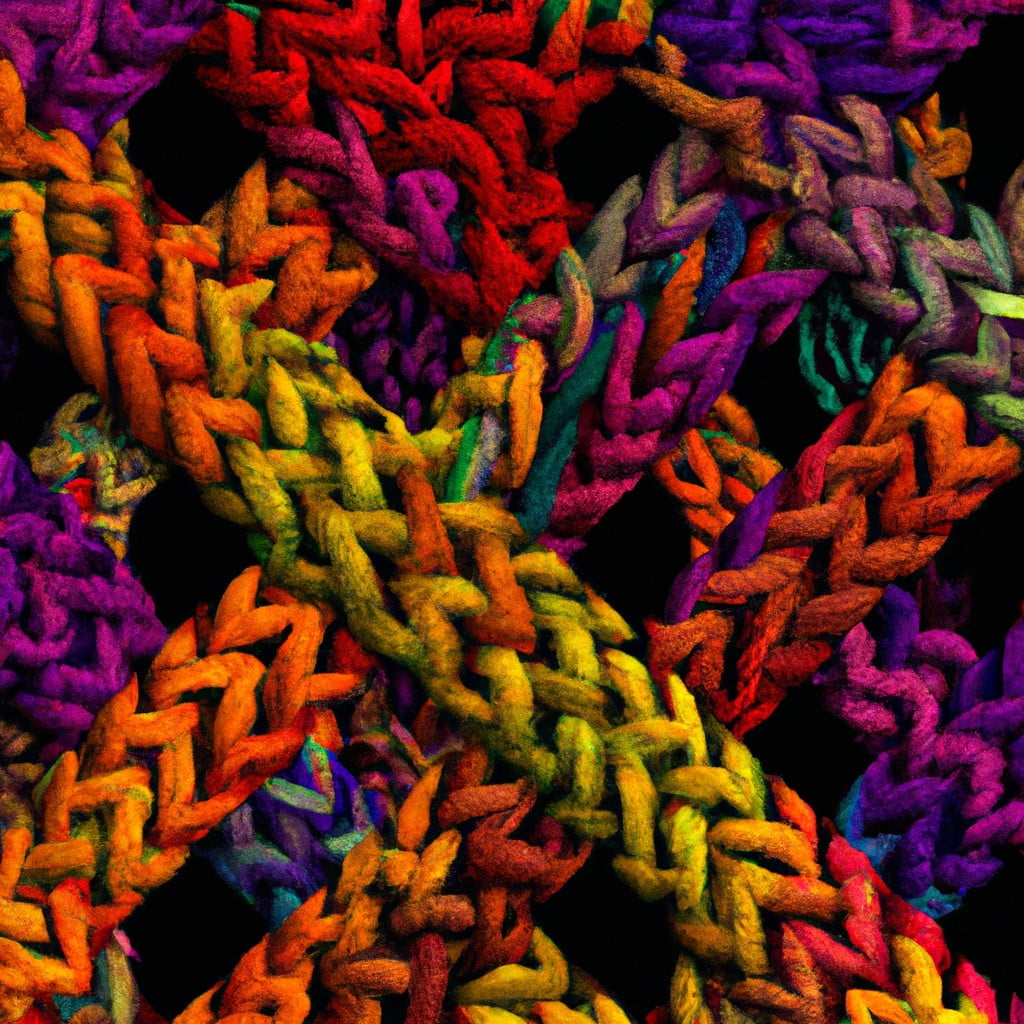
This type of crochet work involves working with one color at a time, but instead of changing colors every few stitches, you carry the unused color along the backside of your work. The result is an intricate design that looks like it was created using multiple strands.
One great thing about Mosaic Crochet is that it’s relatively easy to learn and perfect for beginners who want to try something new. It’s also versatile and can be used in various projects such as blankets, scarves, hats or even home decor items like pillowcases.
To get started with Mosaic Crochet all you need are some basic crochet skills and knowledge on how to read charts (diagrams). You will also need two different colored yarns; one main color (MC) which forms the background pattern while another contrasting color (CC) forms the mosaic design on top.
Stripes
They can be used to create bold, graphic patterns or subtle variations in color. Stripes can be worked horizontally, vertically, or diagonally and can vary in width from thin pinstripes to wide bands of color.
One popular way to incorporate stripes into your crochet work is by using self-striping yarns that change colors automatically as you work. This makes it easy to create complex-looking designs without having to switch between multiple skeins of yarn.
Another technique for creating stripes is by carrying the unused color along the back of your work while you crochet with the other color. This method works well for narrow stripes but may become bulky if used for wider ones.
Stripes also lend themselves well to projects like scarves, blankets, and sweaters where they add visual interest without overwhelming the overall design.
Tapestry Crochet
This type of crochet work is also known as “jacquard” or “colorwork” crochet and can be used to make anything from hats and bags to blankets and wall hangings.
The key feature of tapestry crochet is the use of two or more colors in each row, with one color carried along while the other is worked. The unused color(s) are typically hidden within the stitches, creating a dense fabric that’s perfect for items like bags or baskets.
One thing to keep in mind when working on tapestry crochet projects is tension – it’s important to maintain an even tension throughout your work so that your design doesn’t become distorted. You’ll want to avoid carrying your yarn too tightly across the back of your work as this can cause puckering.
Tapestry Crochet offers endless possibilities for creative expression through its unique combination of colorwork techniques and traditional crocheting methods.
Reversible Crochet
As the name suggests, this technique allows you to create a piece that looks identical on both sides. This means that there’s no “wrong” side to your project, making it perfect for items like scarves and blankets where both sides will be visible.
To achieve this effect, reversible crochet uses special stitches and techniques that allow you to work from either side of your project without having to turn it over. Some popular stitches used in reversible crochet include the Tunisian knit stitch and the interlocking single crochet stitch.
While creating a piece using reversible crochet can take longer than traditional methods due to its complexity, many crocheters find it well worth their time as they end up with an item that is truly unique and versatile.
Double or Multi-Strand Crochet
This technique can be used with any crochet stitch and is perfect for creating warm and cozy blankets, scarves, hats, and other winter accessories.
To get started with double or multi-strand crochet, simply hold two (or more) strands of yarn together as if they were one. Then work your stitches as you normally would.
The resulting fabric will have a unique texture that’s both soft and sturdy.
One thing to keep in mind when working with multiple strands of yarn is tension. It’s important to maintain an even tension throughout your project so that it doesn’t become too loose or too tight in certain areas.
Overlay Crochet
This method involves crocheting over previously made stitches, creating layers of texture and depth. The result is an intricate design that looks like it was created with multiple colors or yarns when in reality, it’s just one piece.
To achieve this look, you’ll need to use two different colored yarns: the base color and the overlay color. You’ll start by working your base row in the desired stitch pattern using your base color.
Then you will switch to your overlay color for subsequent rows.
As you work each row with the overlay color, you will crochet around specific stitches from previous rows using special techniques such as front post double crochet (FPdc) or back post double crochet (BPdc). These techniques create raised stitches on top of previous ones giving them more definition.
Overlay Crochet can be used to create beautiful designs such as flowers or geometric shapes which are perfect for blankets, scarves or even home decor items like pillows! It’s also great for adding texture to plain garments without having too many loose ends hanging around!.
Corner to Corner (C2C) Crochet
This type of crochet work is perfect for creating blankets, scarves, and even bags. The C2C technique involves working in a diagonal direction from one corner to the other, increasing or decreasing stitches as needed to create the desired shape.
One of the great things about C2C crochet is that it’s easy to customize and adapt. You can use different colors or yarn weights for each row, creating unique patterns and designs with ease.
Plus, once you get the hang of it, this technique works up quickly.
To start your own C2C project:.
- Begin by chaining six stitches.
- 2 . Work three double crochets into the fourth chain from your hook.
- 3 . Chain one stitch
- 4 . Turn your work around so you’re facing back towards where you started.
- . Slip stitch into each chain space until you reach the next corner
- . Repeat steps two through five until your project reaches its desired size
Fair Isle Crochet
It involves working with two or more colors of yarn to create intricate patterns and designs. The name “Fair Isle” comes from one of the islands in the Shetlands, where this style was first developed.
In Fair Isle crochet, you work with two or more colors at once, carrying each color along as you go. This creates a beautiful effect that looks like stranded knitting but is achieved through crochet stitches instead.
One thing to keep in mind when working on Fair Isle projects is tension – it’s important to maintain an even tension throughout your work so that your stitches are all uniform and consistent. You’ll also need to be comfortable changing colors frequently as you work through your pattern.
Brioche Crochet
This technique uses two different colors of yarn to create the brioche stitch, which involves working double crochets together with slip stitches in between. The result is an intricate pattern that looks like it was knitted rather than crocheted.
One of the great things about Brioche Crochet is its versatility. It can be used to create anything from scarves and hats to blankets and sweaters.
The thickness of the fabric also makes it perfect for cold weather accessories or home decor items.
While Brioche Crochet may seem intimidating at first glance, it’s actually quite easy once you get the hang of it. With just a little bit of practice, you’ll be able to master this unique technique and add another skill set under your belt as an experienced crafter.
Irish Crochet
It was created as a way to imitate expensive Venetian lace, which was popular at the time. Irish Crochet is known for its delicate and intricate designs, featuring motifs such as flowers, leaves, and vines.
This type of crochet work uses fine thread or yarn and requires great attention to detail. The motifs are crocheted separately before being joined together with mesh stitches to create an overall design.
One unique aspect of Irish Crochet is the use of padding cord underneath some parts of the motif to give it more dimensionality. This technique creates raised areas on top of flat ones giving depth and texture.
Today’s modern version still features traditional elements but has evolved into new forms like clothing items such as dresses or tops rather than just doilies or table runners.
Filet Crochet
This type of crochet work is often used to create intricate designs such as flowers, animals or geometric shapes. The name “filet” comes from the French word for net or mesh, which perfectly describes the delicate appearance of this style.
One unique aspect of filet crochet is that it can be worked in rows or rounds depending on the project’s requirements. It’s also possible to use different colors for each row to create a more complex design.
If you’re new to filet crochet, it may seem intimidating at first glance but don’t worry! With some practice and patience, anyone can master this beautiful technique. Start with simple patterns like checkerboard squares before moving onto more complicated designs.
Hairpin Lace Crochet
These strips are then crocheted together to form intricate patterns and designs. The technique was popular in the Victorian era, but has recently seen a resurgence in popularity among modern crafters.
To create hairpin lace, you’ll need a special tool called a hairpin lace loom or fork. This tool consists of two parallel metal prongs connected by an adjustable bar that can be used to adjust the width of your loops.
Once you have your loom set up, you’ll begin by creating long chains using traditional crochet techniques. Then, using the hairpin lace tool, you’ll loop yarn around each side of the chain before pulling it through both sides with your hook.
The resulting loops will be placed on one side while new ones are created on the other until there’s enough length for whatever project is being made.
Broomstick Lace Crochet
This technique gets its name from the tool used to create it – an actual broomstick or any long cylindrical object like a dowel rod or knitting needle can be used. The loops are created on the stick before being worked off onto your hook.
This crochet style is perfect for creating lightweight scarves, shawls, and even blankets with intricate designs. It’s also great for adding texture to your projects without making them too heavy.
If you’re new to Broomstick Lace Crochet, don’t worry! There are plenty of tutorials available online that will guide you through each step of this fun and creative process. With practice and patience, you’ll soon be able to create stunning pieces using this unique crochet technique.
Solomon’s Knot Crochet
This stitch involves creating loops on the hook and then pulling them through each other to create a knot-like effect. The result is a lacy fabric that can be used for shawls, scarves, doilies or even lightweight garments.
The Solomon’s Knot Crochet technique has been around for centuries and was named after King Solomon from the Bible who was said to have had 700 wives and 300 concubines – hence the name “Lover’s Knot”. It gained popularity in Europe during the Victorian era when it became fashionable to adorn clothing with intricate lacework.
To create this stitch you need only basic crochet skills such as chain stitches (ch), single crochets (sc) double crochets (dc). Once you master these techniques, you can easily learn how to make this beautiful knot by following simple instructions available online or in books dedicated solely to this type of crochet work.
Beaded Lace Crochet
This technique adds an extra dimension of texture and sparkle to your project, making it perfect for special occasions or as a statement piece.
To create beaded lace crochet, you will need some basic supplies such as yarn, beads (size 6/0 or 8/0), a small hook (steel size 10 or smaller), and a bead threader. The process involves stringing the beads onto the yarn before starting your project.
Then you will insert the hook into each stitch while also threading on one bead at a time.
The result is stunning! Beaded Lace Crochet can be used in various projects like shawls, scarves, bags among others. It’s important to note that this technique requires patience since it takes longer than regular crocheting due to adding individual beads along with every stitch.
Circle Lace Crochet
This type of crochet work is perfect for creating doilies, table runners, or even decorative wall hangings. The circle lace pattern can be worked in rounds or rows and uses basic stitches such as chains, single crochets, double crochets, and treble crochets to create the lacy effect.
To start a circle lace crochet project, you will need to begin with a center ring made up of chain stitches joined together into a loop. From there on outwards you will work your way around the ring using various stitch combinations until it reaches the desired size.
One thing that makes Circle Lace Crochet unique is its versatility; it can be used in many different ways depending on what kind of project you are working on. For example: if making coasters or small doilies then one could use finer thread while larger projects like tablecloths would require thicker yarns.
Wire Crochet
This technique can be used to create beautiful jewelry, home decor items, and even sculptures. Wire crochet requires a different set of tools than traditional crocheting, such as pliers and wire cutters.
One advantage of working with wire is that it allows for more structure in the finished product. The stiffness of the wire makes it easier to shape into intricate designs or 3D shapes like flowers or animals.
However, working with wire can also be challenging due to its inflexibility compared to yarn. It’s important not to pull too tightly on the stitches when crocheting with wires as this could cause them to break or become misshapen.
Twine or Jute Crochet
This technique creates a rustic and natural look, perfect for creating home decor items such as baskets, coasters, and placemats. Twine or jute crochet can also be used to create sturdy bags and purses.
One advantage of using twine or jute in your crochet work is its durability. These materials are strong enough to withstand heavy use over time without showing signs of wear and tear.
They are eco-friendly options that add an organic touch to any project.
When working with twine or jute in your crocheting projects, it’s important to choose the right hook size for the thickness of the material you’re using. A larger hook will make it easier to manipulate thicker strands while a smaller one will give you more control when working with thinner ones.
T-Shirt Yarn Crochet
This type of yarn is made from recycled t-shirts that have been cut into strips and rolled into balls. It’s an excellent option for those who want to reduce waste while creating something beautiful.
T-shirt yarn comes in a variety of colors, patterns, and textures depending on the shirts used. The thickness can also vary based on how wide the strips are cut or if multiple strands are combined.
Crocheting with T-shirt yarn requires larger hooks than traditional crochet work due to its thickness but it works up quickly making it ideal for projects like rugs, baskets or bags. There are so many different types of crochet work out there waiting to be explored! Whether you prefer classic techniques like filet or Irish lace crocheting styles or more modern methods such as mosaic crocheting; each technique has its own unique charm that makes them special in their way.
Beaded Crochet
Beaded crochet can be used in many different types of projects, from jewelry to home decor items. The technique involves stringing beads onto the yarn before crocheting them into the project at specific points or intervals.
This creates a beautiful embellishment that adds texture and dimensionality.
One popular type of beaded crochet is creating bracelets with seed beads woven into intricate patterns using single or double-crochet stitches. Another option for incorporating beadwork into your crocheting is by adding larger decorative beads as accents on hats, scarves, shawls, bags or even clothing.
Beaded lacework can also create stunning effects when worked in conjunction with other techniques such as filet lacework where you use open spaces between stitches for added effect.
Rag Crochet
This technique was popular during the Great Depression when people repurposed old clothing and linens to create new items for their homes. Today, rag crochet has become a trendy way to upcycle old fabrics into beautiful and functional pieces.
To get started with rag crochet, you’ll need some fabric strips cut into even widths. You can use any type of fabric as long as it’s not too stretchy or slippery – cotton sheets or t-shirts are great options! Once you have your strips ready, simply loop them together and start crocheting like you would with regular yarn.
One advantage of rag crochet is that it creates sturdy pieces that hold their shape well over time. It’s also an eco-friendly way to reuse materials that might otherwise end up in landfills.
Some popular projects for rag crochet include rugs, baskets, tote bags, and even clothing items like skirts or jackets. The possibilities are endless!
Plarn Crochet
This eco-friendly technique not only helps reduce waste but also produces durable and water-resistant items. Plarn, short for “plastic yarn,” can be made by cutting plastic bags into strips and then joining them together to form a long continuous strand.
Once you have your plarn ready, you can use it just like regular yarn to create various projects such as tote bags, coasters, or even rugs! The texture of the finished product may differ from traditional crocheting materials due to the nature of the material used.
One thing that makes plarn crochet so special is its versatility. You can mix different colored plastic bags together or even add in other materials such as fabric scraps or ribbon for added texture and interest.
If you’re interested in trying out this unique type of crochet work but don’t know where to start, there are plenty of tutorials available online that will guide you through each step.
Tunisian Crochet
It’s also known as Afghan stitch or Tricot Crochet, and it creates a dense, textured fabric that looks like woven material. Tunisian crochet uses an elongated hook with a stopper on one end to keep stitches from falling off.
This technique involves working in two passes: forward pass (working loops onto the hook) and return pass (working them off). The result is a beautiful piece with distinct vertical lines running through it.
One of the advantages of Tunisian crochet is its versatility; you can use different yarn weights to create various textures, from lightweight shawls to thick blankets. This technique allows for colorwork without having to carry multiple strands at once.
If you’re new to Tunisian crochet or want some inspiration for your next project, there are plenty of resources available online such as tutorials on YouTube or patterns on Ravelry.com.
Cro-tatting
It involves using a special hook with a small, pointed end to create intricate lace designs. Cro-tatting can be used to make delicate doilies, edgings for clothing or linens, and even jewelry.
To get started with cro-tatting, you’ll need a cro-tat hook and some thread or yarn. The process involves creating loops on the hook in much the same way as traditional crochet but then pulling them through each other like in tatting.
One of the benefits of cro-tatting is that it allows you to create complex lace patterns without having to use multiple shuttles like in traditional tatting. This makes it an excellent option for those who are new to this type of craft but still want beautiful results.
Cro-knitting or Cro-hooking
It’s also known as cro-hook, double-ended crochet, or cro-knit. This technique uses a special hook with two ends to create unique stitches that resemble the look of knitted fabric.
The process involves working with two strands of yarn at once – one strand is held in front while the other is held in back. The hook then pulls loops through both strands simultaneously, creating a hybrid stitch that has characteristics of both knit and crochet.
Cro-knitting can be used to make various items such as blankets, scarves, hats and even sweaters! It’s an excellent way for those who love knitting but want to incorporate some elements of crochet into their work.
If you’re interested in trying out this technique for yourself but don’t know where to start? There are plenty of online tutorials available on YouTube or craft websites like Ravelry.com which offer step-by-step instructions on how-to-crochet/knit using this method!.
Amigurumi Crochet
These adorable creatures are often made with colorful yarn and have become increasingly popular in recent years. Amigurumi patterns can be found online or in books, and they typically involve working in the round to create a seamless finish.
One of the unique aspects of amigurumi crochet is its ability to bring characters to life through simple stitches and shaping techniques. With just a few basic skills, you can create your own cute little critters that are perfect for gifting or decorating your home.
To get started with amigurumi crochet, you’ll need some basic supplies such as yarn (preferably cotton), stuffing material like polyester fiberfill, safety eyes/nose if needed (or embroidery floss), stitch markers for keeping track of rounds/rows while crocheting in the round.
Color Work Crochet Techniques
Color can be used to create intricate patterns, add depth and texture, or simply make a piece more visually appealing. There are several different techniques for incorporating color into your crochet work.
Fair Isle Crochet: This technique involves carrying two colors at once and creating small floats on the backside of your work. It’s perfect for creating intricate designs with multiple colors.
Tapestry Crochet: Also known as jacquard crochet, this technique involves working with one color at a time while carrying other colors along behind your stitches to create a patterned fabric that looks like it has been woven.
Intarsia Crochet: Similar to intarsia knitting, this technique allows you to incorporate large blocks or shapes in different colors into your design without having long floats on the backside.
Stripes: One simple way to add some interest and dimensionality is by using stripes in various widths throughout an item.
Alternative Method Techniques
These techniques involve using different tools or methods than traditional crochet, such as finger crocheting, arm knitting, or even using a spool knitter. Not only do these alternative methods produce unique textures and designs in your work, but they can also be easier on the hands for those who struggle with holding a hook.
One popular alternative method is finger crocheting which involves using just your fingers instead of a hook. This technique is perfect for creating chunky scarves or blankets quickly without needing any special tools.
Another fun option is arm knitting where you use your arms instead of needles to create large-scale projects like oversized blankets or cowls.
Spool knitting (also known as French Knitting) uses small pegs on a spool that allows you to knit tubes of yarn that can be used in various ways like making cords for drawstrings bags etc.,.
Alternative Tool Crocheting Techniques
Some of these alternative tools include knitting needles, Tunisian crochet hooks, hairpin lace looms, broomstick lace pins or dowels and even your own fingers! Each tool creates a different texture in the finished piece.
For example, using a Tunisian crochet hook allows you to create stitches that look like both knitting and crocheting. Hairpin lace looms produce long loops that can be woven together for an intricate lacy effect.
Broomstick lace pins or dowels give you large loops with open spaces between them while finger crocheting is perfect when you don’t have any other tools on hand.
Experimenting with these alternative techniques not only adds variety to your work but also helps develop new skills as well as creativity in designing patterns. So why not try out some of these techniques today? You might just discover a new favorite way of creating beautiful pieces through this exciting world of yarn crafts!
Lace Crochet Techniques
Lace crocheting involves creating intricate patterns and designs using fine thread or yarn. This technique requires a lot of patience, skill, and attention to detail but the results are stunningly beautiful.
There are many different techniques used in lace crocheting such as filet crochet, hairpin lace crochet, broomstick lace crochet, Solomon’s knot (also known as lover’s knot) stitch among others. Each technique has its unique characteristics that make it stand out from the rest.
Filet Crochet: This type of crocheting creates a mesh-like fabric with open spaces that form geometric shapes or pictures when viewed from afar. Hairpin Lace Crochet: It involves using a special tool called “hairpin” to create loops on either side which can be joined together to form various patterns.
Broomstick Lace Crochet: This method uses large knitting needles (or any other cylindrical object like broomsticks) around which loops are made before being worked into stitches. Solomon’s Knot Stitch: It creates an openwork pattern by making chains and then working single or double stitches into them.
Lace crocheting is not only visually appealing but also offers endless possibilities for creativity.
FAQ
Are there different types of crocheting?
Yes, there are different types of crocheting, including chain stitch, single crochet, double crochet, treble crochet, half-double crochet, and slip stitch.
What are the 5 basic crochet?
The 5 basic crochet stitches are chain, single crochet, half double crochet, double crochet, and slip stitch.
What is the most popular crochet stitch?
The most popular crochet stitch is the double crochet stitch (dc), which is common, approximately double the size of a single crochet stitch, and fast to use.
What is the hardest crochet technique?
The hardest crochet technique is the Jasmine Stitch, which is considered difficult to learn due to its unconventional method.
What are the various crochet techniques used for making different patterns?
Various crochet techniques used for making different patterns include filet crochet, Tunisian crochet, broomstick lace, and tapestry crochet.
Which crochet stitches are best for creating textured designs?
Some of the best crochet stitches for creating textured designs include the bobble stitch, popcorn stitch, puff stitch, cable stitch, and front and back post stitches.
How do different crochet hook sizes affect the final project?
"Using different crochet hook sizes impacts the final project’s stitch size and overall tension, resulting in varying fabric density and yarn quantity requirements."
